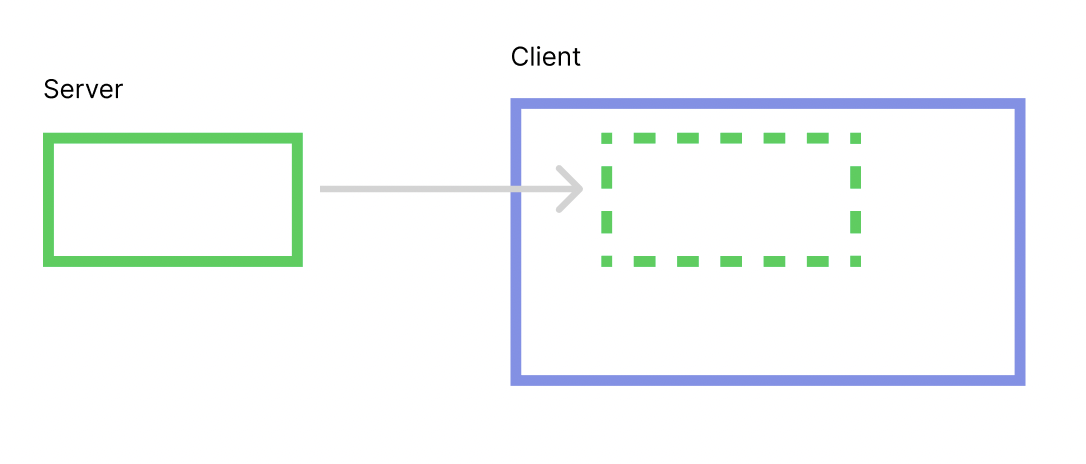Overview of Ambient
Let’s start with a rough overview of Ambient to give you an idea of how it works.
The database (ECS)
The most central thing in Ambient is the ECS “world”. You can think of it as a database that stores everything in your application.
The world is a collection of entities. An entity is a collection of components and a component is a
(name, value) pair. For example, you could have an entity with two components:
entity 1932:
- translation: (5, 2, 0)
- color: (1, 0, 0, 1)
If you compare this to a traditional SQL database, you can think of entities as rows and components as columns. Note that there is no equivalent of a table, though: any component can be attached to any entity.
Client/server
The next thing to know is that Ambient is built around a client/server architecture. Both the server and the client have a world of their own (green and blue boxes in the image below).

The server’s world is automatically replicated to all clients’ worlds. The clients can
add additional entities and/or components to their local world. Typically, you’ll
have game state on the server (for instance { unit: "orc", level: 10 }), and visual
effects or other client-local state on the clients (for instance, spawn fireworks when
the orc levels up).
Note that the replication is one-way. Any changes you make to your client world will not be replicated to the server. To communicate from the client to the server, you will typically use message passing instead.